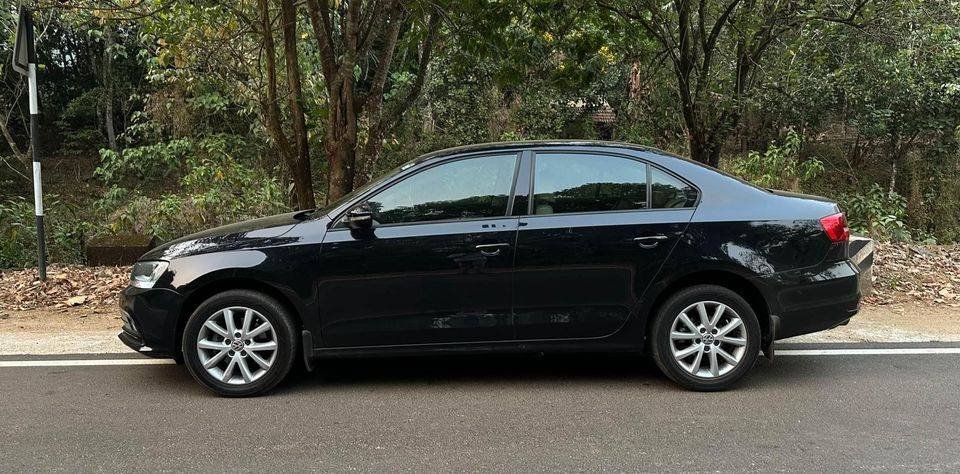The MK6 Volkswagen Jetta is not a Golf with a boot. The car, for the first time, stood on its own. Gone were the curvy and soft design. It looked modern but due to Volkswagen’s wish to become the largest car seller, it had lost its luxury badge (in the USA).
The bells and whistle were taken out and even the rear suspension was changed to a cheaper torsion beam setup. The multi-link suspension was only reserved for the top-of-the-line GLI models.
On the bright side, the Euro-spec models are good. All the things that the USA market cars missed out on these got those. But, both market cars shared some of the engines and so I have written this piece without being biased toward any market.
And with all that said, let’s see some of the common problems in an MK6 Volkswagen Jetta.
Water pump
The water pump’s impeller on an MK6 Jetta is made out of plastic. Over time, with the coolant breaking down, the plastic degrades. At one time, it will just stop pumping the coolant and the car would have an overheating problem.
A good practice is to replace the drive belt at about the 80-100k miles mark. At the same time get the water pump replaced as well. It might be working at that time, but it is a good idea to fit a new one to avoid any serious engine damage.
You can replace the water pump on your own, but it requires a bit of patience and time.
Ignition coil
The ignition coil fails due to three reasons – tuning, wiring problem or it just wears out. On cars with 60-80k miles, this part failure is pretty common. The engine will have misfires and will vibrate eccentrically.
Since there is a variety of engines offered on the MK6 Volkswagen Jetta, the cost associated with this failure varies. If the engine uses an individual ignition coil for every spark plug, then you only need to replace one failed coil.
But there is another setup (older) where a single ignition coil body supplies volts to every spark plug. Here, you will need to replace the whole setup and the cost of doing the same is more.
It is a pretty easy job to replace the ignition coil on this car. Here is a video on how to do that.
Automatic transmission
Volkswagen offered Jetta in 5-speed manual, 6-speed manual and 6-speed DSG transmissions. The manuals were fine but the Dual-Clutch Transmission (or Direct Shift Gearbox) had problems.
The DQ250 6-speed DSG transmission would start jerking, would not shift out of P or would not go into R.
The repair starts with replacing the ATF, filter and rings. If the problem persists, then it may be a sign of the control unit rejecting the dirty VFS solenoid.
This whole process of repairing the transmission is expensive and so a lot of people just source a used transmission from a scrapyard.
If you keep changing the ATF every 60k miles, you should be fine on most occasions until the Mechatronic unit fails for no reason!. Here is how to service the transmission.
EGR and throttle body
This problem is not limited to Volkswagen but is common in all diesel-powered cars. If you have been driving your TDI engine car around the city for most, the chances are that your car will have a clogged EGR and throttle body.
Upon failing, the car will have performance issues, rough idle and more than necessary engine movement when you turn it off.
The Exhaust Gas Recirculation system is meant to dump the exhaust gases back into the intake manifold. This reduces emissions by bringing the combustion temperature down.
This is good for the environment but makes the intake, throttle body and EGR valve caked with carbon deposit. Either you can clean the gunk out (which is recommended) or replace the EGR valve.
Since the former is easy, a lot of people do it. You can too by following this video. Don’t worry, the Golf and the Jetta shares the same diesel engine, so this guide works.
Power window regulator
The power window regulator was already on support drugs when it came out of the factory. This was due to Volkswagen’s attempt to make the Jetta sell more than the Corolla and Civic. Cost-cutting affected many parts of the Jetta and the power window regulator was one of them.
Your window may get stuck going up or down when the parts start failing. Now, the good news is that it can be replaced quite easily. It takes a bit of delicacy, but it can be down. And the revised parts were made better, so you won’t need to replace them for the rest of the car’s life.
Here is a video guide on how to replace the power window regulator on an MK6 Jetta.
MAP sensor
The Manifold Absolute Pressure sensor measures the pressure in the intake manifold that helps the ECU control the AFR (Air/Fuel ratio). Upon failing, the engine would experience cranking problems, poor fuel economy, black exhaust smoke, rough idling, surging and some fault codes related to airflow pressure.
The good news is that it only affected the 2.5L 5-cylinder gasoline engines (US-spec cars). I mean out of seven engines, it affected only one, so yes, it is good news.
You will need to change the MAP sensor and clear the fault codes. This should solve the problem.
And that is about it. I hope it helps. 🙂

